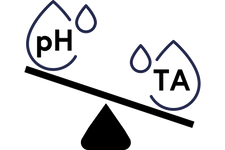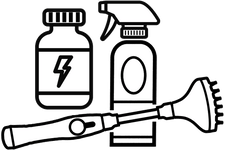How-To Guides | Spa Decontamination Procedure

About Hot Tub Contamination
Well-maintained spas are easy to keep clean and healthy. When they’re neglected though, biofilms containing mold, bacteria and other microbes can take over. This problem can be persistent and difficult to correct.
Some signs of problem spas include: slime formation, cloudy water, and foul or musty odors. Another is skin rashes, which may take several days to develop, and may be attributed to spa use.
Severely contaminated spa water could be the result of excessive bacteria in biofilm, which may resist normal sanitizing methods. Normal draining, cleaning and water replacement may not be enough to eradicate these bacteria.
If you bought a used spa, or are opening a neglected spa, follow decontamination procedures as a precaution. Decontamination is also a good practice when switching to a new or alternative sanitizer system.
Fortunately, there is a disinfection procedure which can bring a sick spa back to good health. This corrective action involves three basic phases:
- Decontamination
- Water replacement
- Verification
Phase 1 - Decontamination
Spa Cover
Thoroughly clean spa cover surfaces, paying special attention to the underside. We recommend using ecoTUB Spa Clean, a gentle cleaner that will not affect pH, to remove dirt and other particles. Then be sure to seal it with 303 Protectant.
NOTE: If hot tub cover is in bad condition or waterlogged, it should be replaced. Waterlogged covers harbor mold, mildew, and bacteria, and may continuously inoculate the spa water with microbes. If you need a new hot tub cover, consult the Spa Cover Replacement Guide.
Spa Filters
Remove and inspect your filter cartridge(s). If a year or more old, or in bad condition, discard. Consult the Filter Replacement Guide if needing replacement filters.
If serviceable, clean cartridges using Power Soak Filter Cleaner, per label directions.
After cleaning and rinsing filter, completely submerge it in a strong solution of Dichlor Chlorine and water. In a clean bucket, dissolve about 1 teaspoon Dichlor in 3-5 gallons of water, soaking the filter for 2-4 hours. Also inspect and clean the interior of the filter housing and skimmer.
Hot Tub Vessel Superchlorination
Now that the cover and filters have been addressed, we can focus on the spa itself. Using the dosage table below, superchlorinate the spa water to at least 100 ppm using Dichlor Granular Chlorine.
Pre-dissolving the chlorine will prevent possible damage to your spa's acrylic surface from direct contact of chlorine granules. (The table is provided since 100 ppm is too high to be measured with test strips).
Dichlor Dosage by Spa Gallons
- 100gal = 2.5 oz. (4-3/4 tablespoons)
- 250gal = 6.25 oz. (3/4 cup)
- 500gal = 12.5 oz. (1-1/2 cups)
- 1000gal = 25 oz. (3 cups)
Now raise the water level in the spa to about 1/2 to 1 inch above the normal high water mark. Circulate the spa water at high speed for 30 minutes with spa cover closed.
Make sure jets are on maximum. Turn air injector switch on and then off for 5 minute intervals during this process to help disinfect air lines. If your spa is equipped with an electric air blower, run it for a minute every five minutes.
NOTE: Avoid inhalation of vapors or mist from spa during the decontamination procedures.
Flushing Spa Plumbing System
Next, and prior to draining, add Spa System Flush per label directions. Circulate water for an additional 30 minutes, continuing to turn air injectors and/or blower on and off at above intervals.
Spa System Flush is critically important. It breaks up and flushes away inaccessible oily deposits, dirt, and other debris from your spa's internal plumbing system. Completes the cleaning process from the inside out.
Phase 2 - Water Replacement
Reinstall the cleaned and sanitized filter, or better still, a new filter cartridge.
Refill the spa with fresh water. Now balance the water, paying close attention to Total Alkalinity and pH. Refer to Spa Prep & Maintenance guide.
The Pre Fresh Spa Filling Filter reduces many impurities, including odor causing organics. Beginning with pure water reduces demand on your spa chemicals. Highly recommended for well water users or when source water is questionable.
Do not add your sanitizer at this time, but proceed to Phase 3.
Phase 3 - Verification
The final, and perhaps most important step is verification of decontamination. Understand that contaminants place a demand on, or deplete free chlorine residual. Now shock the refilled spa with 10 ppm of Dichlor Granular Chlorine, pre-dissolved in a plastic bucket of water.
This is approx. 1 1/4 oz. (2 tablespoons) per 400-500 gallons. Check the spa water with Universal Test Strips to confirm approx. 10 ppm.
Allow the spa to circulate for 8-12 hours with spa cover on to avoid sunshine degradation of the chlorine level.
After this circulation period, check the free chlorine level with Universal Test Strips. If you get a residual free chlorine reading on your test strips, decontamination was likely successful.
If no free chlorine residual is present, excessive demand may still exist, indicating the presence of chlorine depleting contamination.
So, if no free chlorine is present, repeat the decontamination procedure.
After successful decontamination has been verified, add the sanitizer system of your choice. Any unwanted residual chlorine will dissipate in a few days, and is compatible with all the sanitizer systems we offer.
Maintaining sanitizer and using Spa System Flush at every water change prevents the need for total decontamination in the future.
NOTE: If residual chlorine is above 5 ppm after verification, reduce it to 3-5 ppm by allowing it to dissipate naturally. Alternatively, draining a portion of the spa water and replacing it with fresh will reduce chlorine levels.
If you want more information on the various sanitizer systems available for your spa, refer to our Sanitizer Comparison Guide.






























